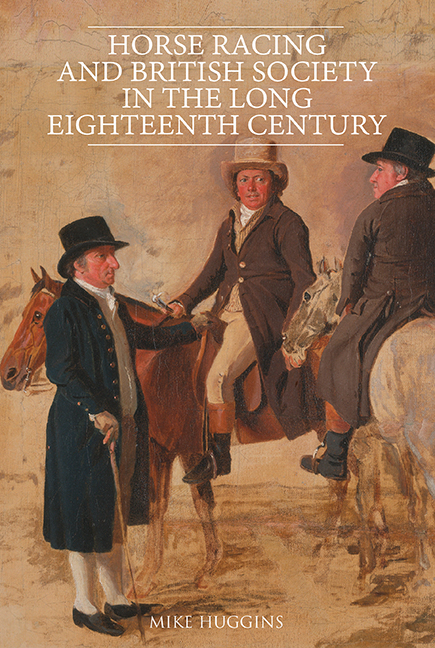Book contents
- Frontmatter
- Contents
- List of Illustrations
- List of Tables
- Acknowledgements
- Further Matter
- Introduction: Setting the Scene
- 1 The ‘Race Week’ in British Social Life
- 2 The Secret World of Wagering
- 3 Horse Racing and British Politics
- 4 Racing and its Rules
- 5 Running the Race Meeting
- 6 The Racehorse, its Ownership and Breeding
- 7 Vital Professionals: Jockeys, Grooms and Trainers
- Conclusion
- Bibliography
- Index
6 - The Racehorse, its Ownership and Breeding
Published online by Cambridge University Press: 28 June 2018
- Frontmatter
- Contents
- List of Illustrations
- List of Tables
- Acknowledgements
- Further Matter
- Introduction: Setting the Scene
- 1 The ‘Race Week’ in British Social Life
- 2 The Secret World of Wagering
- 3 Horse Racing and British Politics
- 4 Racing and its Rules
- 5 Running the Race Meeting
- 6 The Racehorse, its Ownership and Breeding
- 7 Vital Professionals: Jockeys, Grooms and Trainers
- Conclusion
- Bibliography
- Index
Summary
EVEN early in the 1600s importations of the best Arab, North African and Turkish stallions for breeding use had already begun to refresh well-bred British equine blood. By 1700, owning the best racehorses had become very important to certain groups amongst the wealthy and titled. Racehorses, selectively bred for racing ability, were a symbol of an owner's power, emotionally and financially valuable commodities, playing a major role in elite consumption practice according to individual taste and interests. Racing offered owners excitement and glamour, with many attractions: the pleasure of watching a race; the love of horses; the status of owning or breeding a successful mare or stallion; participation in a common elite interest crossing the boundaries of religion and politics; and the added spice and excitement of gambling. Few owners and breeders were involved purely for profit. They hoped for success but understood that, in racing, success could not be guaranteed no matter how much effort was expended.
The success or failure of what was often called a ‘running horse’ was translated into higher prestige or concern. In 1704, when the foreleg of the 6th Duke of Somerset's prized well-bred colt was broken by another horse, the duke immediately engaged in a lengthy correspondence, hoping desperately to get the horse running again. The duke's steward, two farriers (one local and one metropolitan), one apothecary and one bonesetter were all consulted before the duke accepted that the injury was untreatable.
The same year, an elegant, handsome four-year-old Arabian bay stallion, obtained in Aleppo, Syria, by the British consul Thomas Darley, was shipped back to his merchant brother at the family home, Aldby Park in Yorkshire. Darley had first seen the horse through his Syrian hunting-club activity and trading connections. After trying unsuccessfully to buy the horse from a Bedouin sheikh, Darley had the horse stolen and smuggled out through Smyrna. Darley's Arabian stallion covered mares until 1719. Though a stolen horse that never raced, ironically Darley became a dominant foundation sire, making a highly significant contribution to the development of the thoroughbred racehorse. The horse's Y chromosomes are now found in more than 95 per cent of all modern male thoroughbreds.
- Type
- Chapter
- Information
- Horse Racing and British Society in the Long Eighteenth Century , pp. 199 - 239Publisher: Boydell & BrewerPrint publication year: 2018



